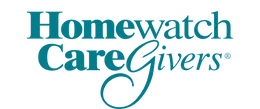First recognized in the 1980s, October became Down Syndrome Awareness Month. This month encourages us to share our knowledge about down syndrome and correct misconceptions about it in order to further support those who have it.
For this blog, let’s learn a little bit about Down Syndrome. Because even learning the basics can help you understand them even just a little bit.
What is Down Syndrome?
Down syndrome is a genetic condition that occurs when a person has an extra copy of chromosome 21. While it affects development, each person with Down syndrome is unique, with their own personality, strengths, and capabilities (National Down Syndrome Society, n.d.-b).
There are three types:
- Trisomy 21 – This is the most common type, accounting for about 95 percent of cases. In trisomy 21, every cell in the body has an extra copy of chromosome 21. This extra genetic material changes how the body and brain develop, but people with trisomy 21 can still live normal lives.
- Translocation – This type makes up about 3 percent of cases. In translocation Down syndrome, part of chromosome 21 breaks off and attaches to another chromosome. Unlike trisomy 21, not every chromosome is affected. Sometimes this form can be inherited, although most cases are still random.}
- Mosaicism – This is the rarest type, found in about 2 percent of cases. In mosaic Down syndrome, some cells in the body have the usual two copies of chromosome 21, while other cells have three. Because of this mix, the characteristics of Down syndrome can be less pronounced, though it varies widely from person to person.
Down syndrome is the most common chromosomal condition, and it occurs in people of all races and backgrounds.
Myths and Truths
Common misconceptions about Down Syndrome:
- People with Down syndrome are not always severely disabled. Many have mild to moderate intellectual differences and can succeed in school, work, and community life.
- They are not “always happy.” People with Down syndrome experience the full range of human emotions, just like everyone else.
- Most babies with Down syndrome are not only born to older mothers. While maternal age is a factor, most children with Down syndrome are born to women under 35.
- Down syndrome does not “run in families” in most cases. Translocation Down syndrome can sometimes be inherited, but the majority of cases happen randomly.
- People with Down syndrome do not all look the same. While some physical traits may be shared, each person has their own appearance and personality.
- They cannot be defined by their condition. People with Down syndrome have individual strengths, talents, and goals that go far beyond their diagnosis.
- They are not sick or fragile by default. Although some health conditions are more common, many people with Down syndrome live long and healthy lives with proper medical care.
Respectful Language Matters
Words shape understanding. Preferred language, which is often overlooked, plays an important role in how we view and treat people with Down syndrome. The simplest guideline is to put the person first. For example, saying “a person with Down syndrome” is respectful, while older terms or labels like "Down syndrome child” or "Down's child" are outdated and hurtful. And of course, let us refrain from using any derogatory words like “retard” and or “retarded”.
It is also worth remembering that Down Syndrome is not a disease. People does not “suffer” from it. It is a condition and some people simply “have” it (National Down Syndrome Society, n.d.-f).
Supporting People with Down Syndrome
Many individuals benefit from early intervention programs, therapies, and ongoing support. With better healthcare and community inclusion, life expectancy for people with Down syndrome has grown significantly over the years (National Down Syndrome Society, n.d.-e).
Our services at Homewatch CareGivers of Idaho for people with intellectual and developmental disabilities focus on personalized support and companionship. We aim to help families maintain a safe and comfortable home environment.
How You Can Get Involved:
- Share facts and resources to spread awareness.
- Celebrate the achievements of people with Down syndrome.
- Use respectful, people-first language.
- Support local and national Down syndrome organizations.
This month is about inclusion, respect, and recognizing the abilities of people with Down syndrome. When communities embrace diversity, everyone benefits.
Need help in caring for a loved one with Down Syndrome or any intellectual and developmental disabilities? You can contact us at 208-350-7269.
Homewatch Websites:
Boise: www.homewatchcaregivers.com/boise
Twin Falls: www.homewatchcaregivers.com/twinfalls
Nampa: www.homewatchcaregovers.com/nampa
Pocatello: www.homewatchcaregivers.com/pocatello
We serve the following cities:
Boise, Meridian, Eagle, Star, Nampa, Caldwell, Kuna, Mountain Home, Middleton, Parma, Homedale, Twin Falls, Jerome, Buhl, Kimberly, Filer, Wendell, Gooding, Pocatello, Burley, Chubbuck, American Falls, and Blackfoot.
References
National Down Syndrome Society. (n.d.-a). Down syndrome awareness month. NDSS. Retrieved September 30, 2025, from https://ndss.org/down-syndrome-awareness-month
National Down Syndrome Society. (n.d.-b). About NDSS. NDSS. Retrieved September 30, 2025, from https://ndss.org/about
National Down Syndrome Society. (n.d.-c). Myths and truths. NDSS. Retrieved September 30, 2025, from https://ndss.org/myths-truths
National Down Syndrome Society. (n.d.-d). Understanding a diagnosis of Down syndrome. NDSS. Retrieved September 30, 2025, from https://ndss.org/lifespan/understanding-a-diagnosis-of-down-syndrome
National Down Syndrome Society. (n.d.-e). Preferred language guide. NDSS. Retrieved September 30, 2025, from https://ndss.org/preferred-language


